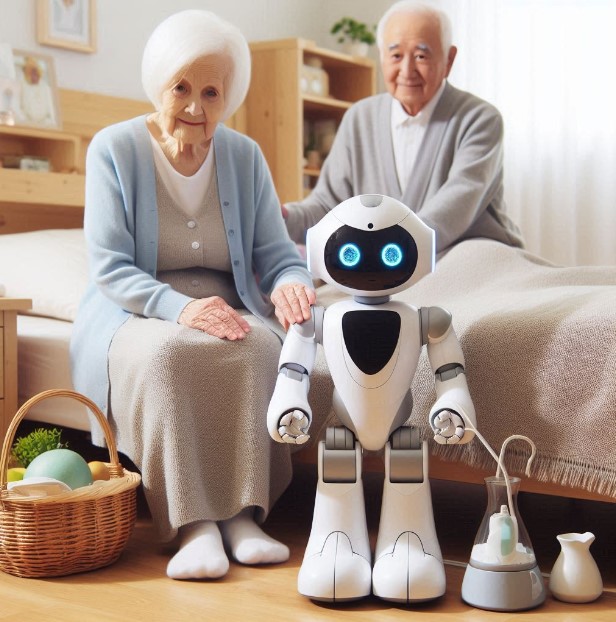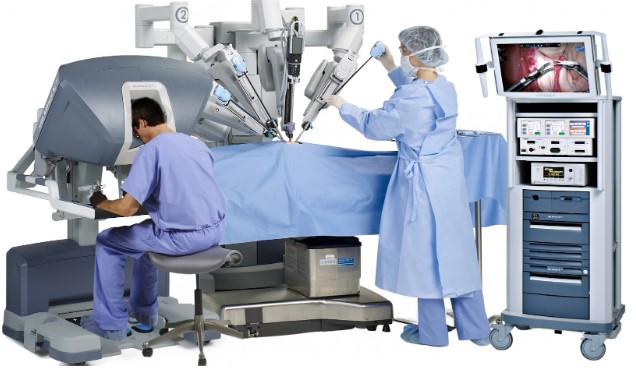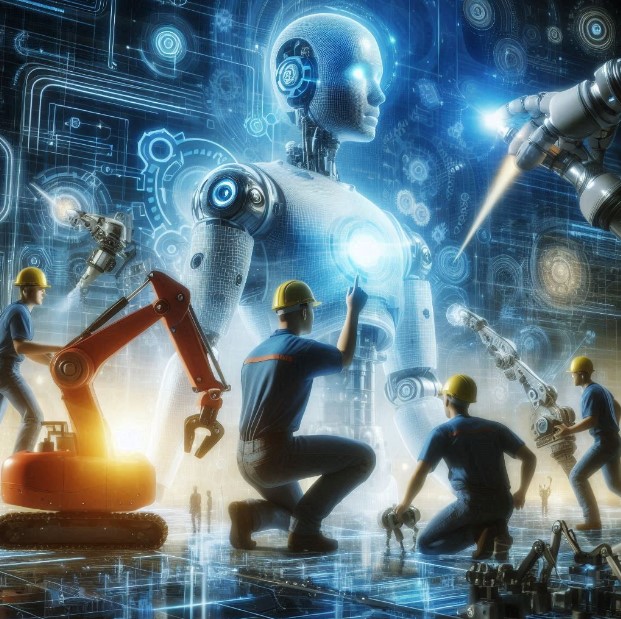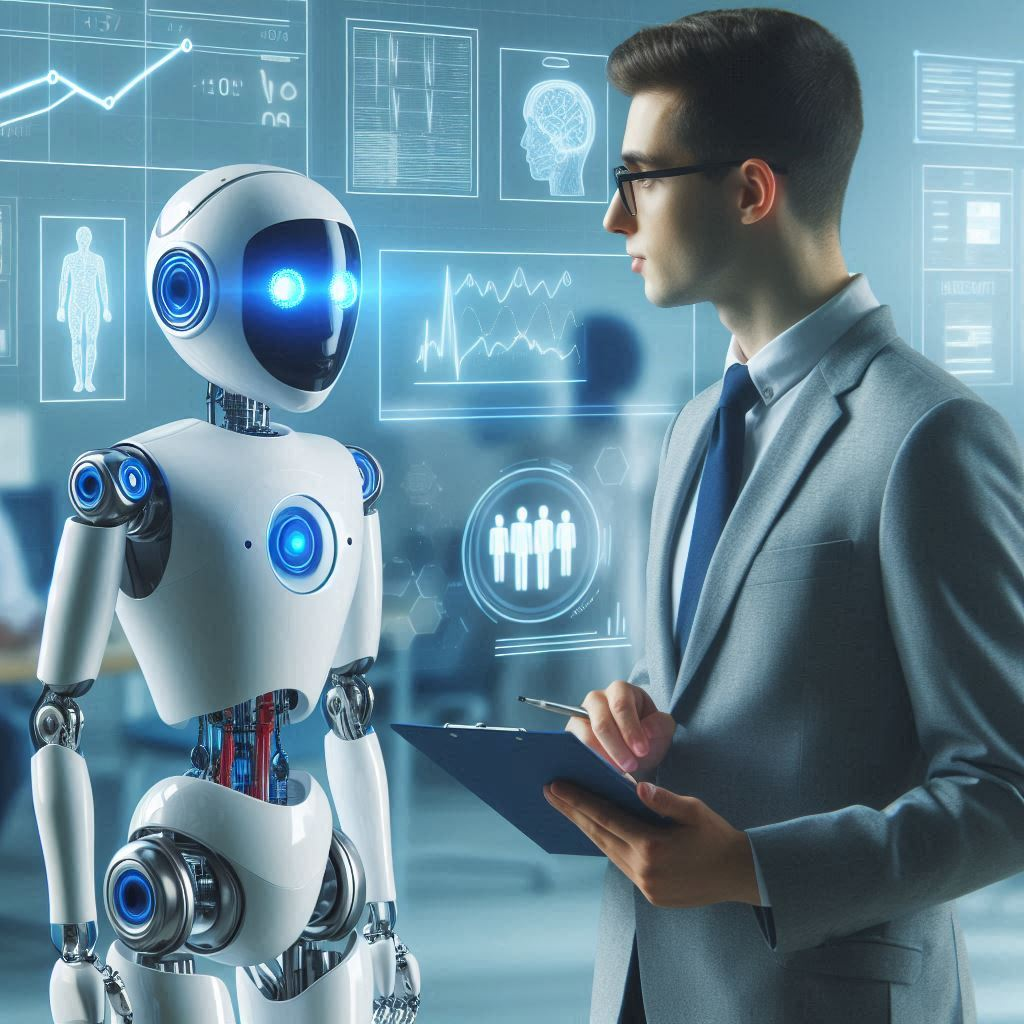Introduction
In recent years, humanoid robots have transitioned from science fiction icons to essential elements of everyday life, thanks to significant advancements in humanoid robotics and artificial intelligence. These robots, equipped with human-like facial expressions and degrees of freedom, now assist with tasks ranging from household chores to industrial robotics applications. Companies like Hanson Robotics and leading research institutes are at the forefront of this transformation, showcasing real-world scenarios where humanoid robots interact naturally with humans, enhancing our lives in ways previously unimaginable. Integrating such robots into daily activities represents a remarkable leap in robot technology, blending AI seamlessly with robotics.
Humanoid robots are expected to have a total addressable market of $38 billion by 2035. This is a more than six-fold increase from the previous estimate of $6 billion (Goldman Sachs, 2024).
Core Technologies Driving Humanoid Robots
The rapid evolution of humanoid robots is propelled by several cutting-edge technologies that work together to enhance their functionality and adaptability. Machine Learning (ML) plays a crucial role by enabling robots to learn from vast amounts of data and past experiences, significantly improving their capabilities in tasks like voice recognition and movement coordination. Computer Vision technology empowers these robots to interpret visual cues from their environment, allowing them to recognise faces, read signs, and navigate complex settings autonomously. Meanwhile, Natural Language Processing (NLP) equips robots with the ability to comprehend and respond to human speech, fostering more natural and effective communication between robots and humans.
Coupled with these, Robotics Engineering advancements enhance robots’ physical design and dexterity, ensuring they can perform intricate and precise tasks with remarkable efficiency.
Conversion costs—the lifeblood of transforming raw materials into market-ready products—are often a hefty expense. A BCG analysis revealed that robotic automation can dramatically reduce these costs by up to 15%. Coupled with strategic process and layout optimisations, the potential savings could soar to an impressive 40% (Boston Consulting Group, 2019).
Together, these core technologies transform humanoid robots from mere automatons into sophisticated machines capable of interacting and collaborating with humans in diverse real-world scenarios.
Challenges and Needs of Humanoid Robots
Limited Dexterity and Mobility
Replicating human movement remains a significant challenge for humanoid robots. While advancements in robotics engineering have enhanced their capabilities, achieving the natural fluidity and dexterity of human motion is still complex. Robots often struggle with the intricate coordination required for tasks involving fine motor skills or complex interactions with their environment. Advanced computer vision is critical for these robots to navigate and operate in diverse and dynamic settings, enabling them to accurately recognise and interact with objects and obstacles. Additionally, sensor fusion—integrating data from multiple sensors—provides a comprehensive situational awareness essential for precise and adaptable movements. This synthesis of sensory data allows robots to process information about their surroundings more effectively, aiding in better decision-making and movement coordination.
AI for Autonomous Vehicles: Redefining Transportation
Understanding and Responding to Human Interaction
Comprehending and appropriately responding to human interaction is another formidable challenge for humanoid robots. NLP is at the core of this difficulty, requiring robots to understand nuanced human speech, interpret context, and discern intent. Current NLP technologies are continually improving but still fall short of fully grasping the complexity of human language, especially in informal or colloquial conversations. The ability of robots to respond suitably in various contexts—whether during casual conversation or in response to commands—is crucial for effective interaction. This requires not only advanced NLP but also a nuanced understanding of social cues and emotional expressions. Ensuring that robots can engage meaningfully and empathetically with humans is essential for their integration into everyday social environments.
Adapting to Dynamic Situations
Adapting to dynamic and unpredictable situations requires humanoid robots to make real-time decisions and adjust their actions based on the changing context. Artificial Intelligence (AI) plays a vital role here, enabling robots to process real-world data, recognise patterns, and react accordingly. This involves integrating machine learning algorithms that allow robots to learn from past experiences and adapt their behaviour to new scenarios. Such adaptability is critical for robots to function effectively in environments that are constantly changing, ensuring they can handle unforeseen challenges and execute tasks with a high degree of autonomy and accuracy.
Tech Solutions for Breakthroughs in Humanoid Robotics
Computer Vision and Sensor Fusion
Computer vision enables robots to perceive and interpret their surroundings by analysing visual data from cameras. This capability is crucial for robots to navigate, recognise objects, and interact with their environment effectively. Sensor fusion enhances this process by integrating information from multiple sources, such as cameras, LiDAR, and other sensors. Combining these diverse data streams allows robots to form a richer and more accurate understanding of their surroundings. This comprehensive situational awareness is essential for tasks that require precise movement and interaction, such as avoiding obstacles or identifying specific objects in complex environments.
Generative AI and Machine Learning
Generative AI plays a pivotal role in creating realistic, human-like movement patterns for humanoid robots. By simulating intricate motion dynamics, generative AI helps robots mimic natural human movements, enhancing their ability to perform complex tasks fluidly. Machine learning complements this by enabling robots to learn from their experiences, continuously improving their performance over time. This learning process allows robots to adapt to new situations, refine their actions, and increase efficiency. The combination of generative AI and machine learning leads to reduced errors and more effective task execution, making robots more capable and reliable in various real-world applications.
GPU Acceleration
GPU acceleration is essential for real-time processing of the vast amounts of data generated by sensors and AI algorithms. Powerful GPUs enable robots to handle complex computations quickly, facilitating advanced functionalities such as rapid decision-making and smooth execution of tasks, thereby enhancing overall performance and capabilities.
How to use GPU Programming in Machine Learning?
IoT Edge Computing
IoT edge computing allows robots to process data locally rather than relying solely on cloud computing. This local processing capability ensures faster response times, enabling robots to make immediate decisions and perform real-time applications more efficiently, which is crucial for dynamic environments where quick adaptation is necessary.
Natural Language Processing
NLP is fundamental for enabling robots to understand and engage in human speech. NLP allows robots to interpret spoken language, including context and subtleties, facilitating more natural and meaningful interactions with humans. Effective NLP is essential for clear communication, ensuring robots can respond appropriately to various commands and conversational cues. This capability enhances the user experience by making interactions with robots more intuitive and engaging, bridging the communication gap between humans and robots and allowing for smoother and more effective human-robot collaboration.
AR/VR/XR
Augmented Reality (AR), Virtual Reality (VR), and Extended Reality (XR) offer transformative potential for training and human-robot collaboration. These technologies create immersive environments where robots can be trained on tasks through simulated scenarios, allowing for extensive practice and refinement in a controlled setting. Additionally, AR/VR/XR can enhance human-robot collaboration by providing shared virtual experiences where both robots and humans can interact with and manipulate digital objects in real time. This shared perspective fosters a deeper understanding and more effective coordination, improving the efficiency and effectiveness of collaborative tasks.
Use Cases and Examples
Elder Care

AI-powered humanoid robots are transforming elder care by providing comprehensive support to seniors. These robots assist with daily tasks such as medication reminders, meal preparation, and monitoring health metrics, reducing the dependency on human caregivers. Their computer vision technology allows them to navigate living spaces safely, avoiding obstacles and ensuring the well-being of elderly residents. NLP facilitates meaningful communication, enabling robots to understand and respond to the needs and preferences of seniors, thereby offering companionship and reducing feelings of isolation. Humanoid robots can also remind seniors of appointments, help them stay connected with loved ones, and even engage them in light physical activities or cognitive exercises. Such capabilities enhance the quality of life for seniors while alleviating the workload on human caregivers, making elder care more efficient and responsive to individual needs.
The global market for healthcare robots, valued at $7.34 billion in 2020, is projected to reach $24.6 billion by 2025, growing at a CAGR of 22.8% (Stuart N., 2023).
By integrating these advanced technologies, AI-powered humanoid robots offer a holistic approach to elder care, fostering independence and providing emotional support reliably and consistently.
Logistics and Warehousing
In logistics and warehousing, AI-powered humanoid robots are revolutionising the automation of picking and packing tasks.
Robotic automation can increase process speeds by up to 70%, significantly improving operational efficiency (Ginzburg, 2024).
These robots use computer vision to identify and locate objects, facilitating the efficient retrieval and handling of items in busy warehouse environments. Their advanced robotic manipulation capabilities, powered by generative AI, enable them to precisely grasp and move objects, ensuring accurate and damage-free handling. This automation streamlines warehouse operations, reduces labour costs, and enhances throughput.
More details on our relatedarticle Transformative Role of AI in Supply Chain Management!
Surgical Robots

Surgical humanoid robots represent a groundbreaking advancement in medical technology, merging the precision of robotics with the expertise of human surgeons. These robots, such as the da Vinci Surgical System, enhance the capabilities of surgeons by providing unparalleled precision, flexibility, and control during procedures. Equipped with advanced AI, computer vision, and machine learning algorithms, these robots can assist in complex surgeries by performing intricate tasks with a level of accuracy that surpasses human capabilities. For instance, they can make precise incisions and suture tissues with minimal invasiveness, reducing patient recovery times and improving outcomes.
Manufacturing and Construction

In the manufacturing and construction sectors, humanoid robots equipped with advanced dexterity and AI are increasingly being utilised to perform complex tasks in hazardous environments. These robots can handle intricate assembly processes, operate heavy machinery, and conduct inspections in conditions unsafe for humans. Generative AI contributes to precise and fluid movements, allowing robots to execute tasks that require fine motor skills and adaptability. Sensor fusion enhances their situational awareness, combining data from various sensors to provide a comprehensive understanding of their surroundings.
This capability ensures that robots can adjust to dynamic workspaces and avoid potential hazards. The integration of these technologies not only improves safety by reducing human exposure to dangerous conditions but also enhances operational efficiency. Robots can work continuously without fatigue, handle repetitive or strenuous tasks, and maintain high levels of accuracy, leading to increased productivity and consistency in manufacturing and construction projects.
Read a more in-depth review on AI in Robotics!
What TechnoLynx Can Offer
TechnoLynx specialises in advanced technologies for humanoid robots:
-
Computer Vision: Custom object recognition and navigation systems enhance robots’ operational efficiency and accuracy.
-
Generative AI: Solutions for realistic movement patterns, improving task execution and reducing errors.
-
GPU Acceleration: High-speed processing for complex functions, enabling real-time data handling and responsiveness.
-
IoT Edge Computing: Local decision-making for faster responses in dynamic environments, reducing cloud dependency.
-
Natural Language Processing: Systems for natural, accurate human-robot communication, enhancing user interaction.
-
AR/VR/XR: Immersive environments for training and collaboration, improving readiness and interaction.
Conclusion
AI in humanoid robotics transforms sectors like elder care and manufacturing, boosting the quality of life and productivity. Ethical guidelines are crucial for responsible AI use, and human-machine collaboration promises innovation and progress.
Partner with TechnoLynx to gain AI-driven humanoid robotics. Contact us for custom solutions that drive success in your industry!
References
-
Boston Consulting Group. (2019, March 27). Advanced Robotics in the Factory of the Future. Boston Consulting Group. Retrieved July 1, 2024.
-
Chinese General Hospital and Medical Center. (2022, September 30). THE DA VINCI ROBOT THE LATEST MEMBER OF THE CGHMC SURGICAL TEAM. Chinese General Hospital and Medical Center. Retrieved August 15, 2024.
-
Ginzburg, J. (2024, February 29). Maximising Productivity with AI in Warehousing. LinkedIn. Retrieved July 1, 2024.
-
Goldman Sachs. (2024, February 27). The global market for humanoid robots could reach $38 billion by 2035. Goldman Sachs. Retrieved July 7, 2024.
-
N, D. S. (2023, August 1). The Future of Reablement: Robotics - Ushering in a New Era of Reablement in Care Homes. LinkedIn. Retrieved July 2, 2024.













